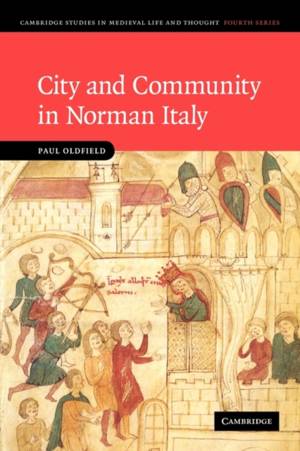
- Afhalen na 1 uur in een winkel met voorraad
- Gratis thuislevering in België vanaf € 30
- Ruim aanbod met 7 miljoen producten
- Afhalen na 1 uur in een winkel met voorraad
- Gratis thuislevering in België vanaf € 30
- Ruim aanbod met 7 miljoen producten
Zoeken
Omschrijving
This pioneering study of urban society in twelfth-century mainland Norman Italy examines the self-governing role of urban communities and explores their social ordering, identities and communal activities. Drawing on charters, chronicles, annals and other sources, Paul Oldfield uncovers notable continuities in a range of cities across southern Italy throughout a period of regime change and disruption. Unlike traditional interpretations which suggest that the Normans, and the creation of a monarchy in 1130, stifled urban development, this book suggests that south Italian urban communities were still able to enjoy a level of autonomy under the Norman monarchy. By emphasising the fluidity of the social structures and groups found in these cities, alongside the influential role of both the Church and civic consciousness, the author sheds new light on the multi-layered complexity of the urban communities of Norman Italy and provides a more balanced comparison with the cities of northern Italy.
Specificaties
Betrokkenen
- Auteur(s):
- Uitgeverij:
Inhoud
- Aantal bladzijden:
- 312
- Taal:
- Engels
- Reeks:
- Reeksnummer:
- nr. 72
Eigenschappen
- Productcode (EAN):
- 9781107403079
- Verschijningsdatum:
- 18/08/2011
- Uitvoering:
- Paperback
- Formaat:
- Trade paperback (VS)
- Afmetingen:
- 152 mm x 229 mm
- Gewicht:
- 417 g

Alleen bij Standaard Boekhandel
+ 170 punten op je klantenkaart van Standaard Boekhandel
Beoordelingen
We publiceren alleen reviews die voldoen aan de voorwaarden voor reviews. Bekijk onze voorwaarden voor reviews.











